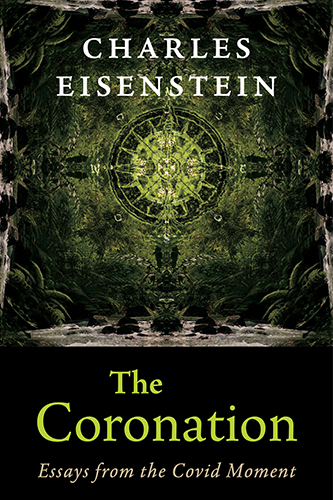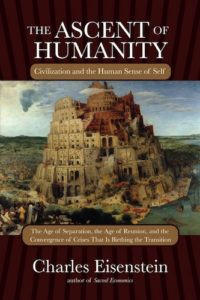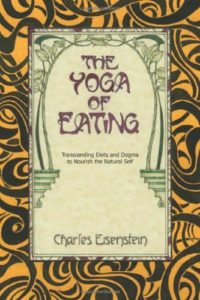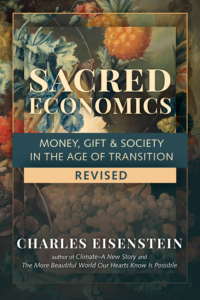The Ascent of Humanity
Chapters
Chapter 5: The World Under Control
Life, Death, and Struggle
From the standpoint of the separate self, the ultimate victory of the Technological Program would be to triumph over death itself. In one form or another, this goal drives all of our efforts to dominate, accumulate, and control. It exists in diluted form in the pursuit of security; it is written into our ideology of competition and survival of the fittest. Yet, despite propaganda to the contrary, millennia of intensifying control have done nothing to hold death at bay; the predominant causes of death have changed, but not its inevitability (and not nearly as much as we would like to think the human lifespan).[14] As always, we humans are born, we live, and we die.
Failing to overcome death, we instead seek to deny it by hiding it away and pretending it won’t happen. In polite company we deny it with euphemisms. In most children’s stories of the last fifty years, we simply never mention it (in contrast to the fairy tales of yore).[15] In our funerary practices we deny death by applying cosmetics and embalming, and by preserving corpses for centuries in lead-lined coffins. We hide away our sick and dying in hospital intensive care units as we go through frantic medical rituals to preserve just a few more hours of life at whatever cost. We buy packaged food that obscures the fact that an animal or plant had to die. In our religion we deny death through various conceptions of an afterlife.[16] In our lives, we pursue goals and ambitions that simply would not make sense if we had integrated the fact of our eventual dying. And in our scientific fantasies, we imagine that someday we can transcend death through nanotechnology, genetic engineering, cyborg technology, or computers.
So successful are we at hiding death that many people grow up having never seen a dead person, surely an unprecedented phenomenon on planet earth. Thanks to our pusillanimous story-books, polite euphemisms, and hiding of corpses, from the perspective of the child it is as if death did not exist at all, an impression strangely consistent with the ubiquitous violence of television cartoons, in which characters survive a ten-ton safe or a bomb falling on them with no permanent ill effects. It is also, again, strangely consistent with the graphic and deadly violence of adult television and movies, in which the killing of legions of badguys is shorn of nearly everything that makes death death.
The deep reason why our culture finds it necessary to deny death is that death puts the lie to the agenda of our narrowly-conceived selves. Contemplation and integrated awareness of death reveals the unreality, or the conditional reality, of the discrete and separate self. Because the self that we define as our bodies, our names, our knowledge, our possessions, our self-image, and our stories—Alan Watts’ “skin-encapsulated egos”—did not exist before we were born and will cease to exist when we die, that self is unreal, impermanent; along with it, the dualism of self and environment is unreal as well. It is no accident that every spiritual tradition that I know of has practices consisting of the contemplation of death. That is also why a close brush with death is so transforming: we stop worrying about the trivial concerns of life and walk in the knowledge, as one near-death survivor put it, that “only love is real.” When death exposes the impermanence and conditional reality of the self as we know it, all of the behaviors based on its aggrandizement no longer make sense. Society as we know it is based upon these behaviors; hence society’s need to euphemize, hide, and deny death.
Because it accompanies the denial of our true selves, our denial of death is equally a denial of life, and separation from death is separation from life. Death punctures the illusion of the self (as we conceive it) and on a psychological level rends the fabric of the modern world; hence the cultural necessity of denial. When will we cease denying death? Probably, only when we no longer can; when it invades our lives so forcefully that the old illusions cannot stand. As the social, ecological, and physiological underpinnings of health accelerate their decay, this invasion is gathering in force and ubiquity. On the personal level, it will come as the realization that the lives we had been living simply do not make sense and cannot go on. On the collective level this realization is precisely that of the “unsustainability” of modern society that the environmentalists keep telling us about. Just as a person often has to become very very sick, or experience a close brush with death, in order to wake up to life, so also it is probably necessary for the same thing to happen on the planetary level before we as a species wake up to the fraudulence of our dualistic conception of ourselves as separate from nature. When our collective survival is imminently, dramatically, and undeniably in danger, and only then, our present collective behaviors and relationships to the rest of life will cease to make sense.
Cultures less enslaved to the myth of separateness feared death less too, seeing it not as an ending but a return. Our fear of death is a product of the same linear thinking that underlies interest-money and all the other expressions of the Age of Fire. It would not occur to someone immersed in the cyclic worldview that underlies the economy of the gift. By virtue of being born we are all sojourners in the play of separation, but few before us have wandered in so deeply as to forget the wholeness from whence we came. Almost. We have not really forgotten—can never forget—what we are; it remains as a stirring in the heart, enduring forever until the world under control, the world of the separate self, cannot hold. Our interbeingness, banished from waking experience, manifests as a longing, an empathy for other living beings and even inanimate objects.
Characteristically, psychologists consider it a mild pathology to project human attributes onto inanimate objects; even animals and plants we invest with a lesser degree of being than ourselves. (Not thinking, they—per Descartes—have less “amness”.) Far from mental illness, I see these tugs of identification with the other to be glimpses of an underlying truth; it is only because they deny our presumed separateness that we dismiss them as irrational. Of course, according to the same premise, falling in love is irrational too. What reason is there to care for anyone else? Why should I strive for another’s benefit? What’s in it for me? Love (and any form of compassion) crumbles the walls of separation. However we may explain it away according to some biological imperative, anyone who has been in love knows there is more to it than a procreative urge or an unconscious bargain for mutual aid. The ecstasy and bliss that suffuses lovers in full flush is an outcropping of the underlying joy inherent in our true state of union. Love, breaking down the barriers between me and thee, connects us to that state. It is our lifeline to sanity, to the wholeness of what we are. (That is also a pretty good definition of Christ, an identity the early Church fathers recognized in their more lucid moments.) Love saves us from our limited ego-selves, breaches the fortress of our separation, rescues us from the inevitable Hell that our addiction to control creates.
As many poets and mystics have perceived, love and death are intimately related. Both involve a dissolution of the ordinary boundaries of self. On the individual level, this dissolution is the felt realization: “You and I are not really separate.” On the collective level, it is the realization that human beings are not separate from nature. Another way to view the shift of consciousness that this book heralds is that we will fall back in love with the world.
The collective realization of the unity of human and nature tells us that “What we do to the world, we do to ourselves”—a concept that I’ll refer to as “ecological karma.” This goes beyond interconnectedness or the pragmatic realization that we “depend upon nature.” The human-nature dualism implies that we can avoid the consequences of our depredations and manage their costs and benefits. We can choose this forest to clearcut and that mountain to stripmine, because according to our rational calculations they are less important than other ones; they are not “critical ecosystems.” We don’t really need them. Their value is conditional. We feel we can preserve some and destroy others, as long as we calculate the effects carefully enough, the costs and benefits. In contrast, the understanding of ecological karma tells us that we can never manage or avoid the effects of our actions; that any marring of the health and beauty of the planet diminishes our own health and the beauty of our own lives as well, inescapably. It tells us as well that the laws of nature make no exception for human beings.
The new conception of self, personal and collective, that will be born from the collapse of the present one will therefore bring with it a very different kind of technology, economy, medicine, and way of life, that seek to create beauty and that model themselves on the processes of nature. It is not so much a “return to nature” as a returning of nature to us, a recovering of nature, a reconnection to nature. Of course, nature has never left us; everything we are is in some sense natural. It is only because we have convinced ourselves otherwise that life has drifted so far out of balance. Our present efforts to deny death, to conquer death, and to artificially prolong life by mechanical means at any cost, only increase our fear of death and reinforce our delusions of separateness. They pretend that nature might excuse human beings from her laws, that we might be exempt from the cycles of birth, death, and decay. And fear of death, in turn, really equates to a fear of life, which is about growth, change, and transformation, a continual dying of the old and birth of the new, season to season and moment to moment.
To deny death is to deny life. Think of the godlike ideals to which we aspire, the eternal youth, beauty, leisure, and supernatural power of the Olympian gods. Eternal youth is a kind of eternal death, a stasis more akin to an embalmed Egyptian mummy than to a living being (Egyptian embalming, after all, was directed at preserving the eternal life of Pharaoh). “To despise the fact of aging is not only to despise life but to betray a pitiful ignorance of the nature of life. . . . Youth is not a state to be preserved but a state to be transcended.”[17]
The regime of control that denies death holds us apart from life too, both by preventing us, for safety’s sake, from living it fully, but also by cutting us off from even the possibility of fully living by making an other of the world. Control, in essence, is a struggle against the world. Medical interventions triumph over nature when they interrupt and deny the natural process of death, as does housecleaning when it reverses the migration of dirt—which is quite literally the world—into our houses.
The perfect mastery of nature embodied in the aforementioned Olympian ideals is life-denying even in its more practical incarnation as the secure, ordered life of the modern adult. Thomas Hanna puts it like this:
One of the myths of aging is that we cannot do all the things that we once could. But the actual fact about aging is that we cease to do all the things that we once did. As our search for a vocation settles into a fixed “job,” as our search for a mate settles into marriage, as our many expectations settle into a finite number of fulfillments, as our aspirations settle into steady certitudes, and as our broad range of potential movements settles into a narrow band of habitual movements, we will inevitably find ourselves looking in fewer directions and moving in fewer directions. As the possibilities in our life are sorted through, discarded, and finally edited down to a daily routine of actualities, our living functions become limited and specialized.
The accepted personal goal of “adulthood” is, it seems, to settle down and obtain security, to obtain a fixed pattern of life that allows us to escape from the insecurity of freedom and the incertitude of new aspirations. To the degree that individual human beings are seduced into the accepted belief that personal fulfillment means a settled, secure, and circumscribed mode of life, so, to that degree, do the functions of one’s living body adapt, becoming simpler, more straightforward, and rigid. [18]
The fully insured, 100% guaranteed life that our social institutions suggest, channeled through the media, the schools, and often our parents, that is mapped out in advance to minimize uncertainty, is no life at all. What’s more, despite all our efforts to mitigate its uncertainty, life is fundamentally uncertain and out of control. Everyone senses on some level that our management of life is little more than a pretense by which we delude ourselves into believing in the permanence and stability of that which is neither. In this gigantic game of let’s pretend, we feign belief in the normalcy of modern life, but no one really believes in it; hence the universal sense of phoniness, emptiness, and void underlying the adult world. Reader, do you ever get the feeling that you are a child playing grown-up? When we act the roles of responsible, right-thinking, civilized adults, we are just pretending, only we have lost ourselves in the pretense. Take heart: it cannot last forever. All of us will one day experience real life smashing through the seemingly secure structures of our lives and selves. When this happens, people often think, “How could this be happening?” or “This couldn’t be,” or “This is something that I thought only happened to other people.”
Even worse than the disintegration of the orderly, stable, permanent-seeming life “under control” is for it to smoothly proceed until time and youth are exhausted. This is the true calamity, and not only because of the agony of regret at finding, in old age, that we have not truly lived. From the very beginning, there is the feeling of living a life that someone else has planned out, a life that is not truly our own. My college students sometimes report feeling trapped into living the lives their parents and society at large expect them to live; they are aware of the theoretical possibility of changing their major to something “impractical” or of dropping out of school and traveling the world, of taking some time off to find themselves, but they cannot find the audacity to take such a step. “My parents would kill me,” they say: a very revealing statement for the survival anxiety it encodes. Of course their parents are powerless to stop them, but by now they have internalized the voice of authority, so that what is unacceptable to their parents has become unacceptable to themselves. They are thus fully socialized, fully domesticated, except for a submerged longing, a caged and fenced wildness that can and will explode out in the form of violence—longing denied—whenever self-control lapses or when exceptional outside conditions offer temporary release.
Aversion to death and aversion to uncertainty in life arise from the same basic worldview. Indeed, if uncertainty is the demise of the familiar, then death is the greatest uncertainty any of us have faced since we left the womb. Both involve letting go of previously fixed categories by which we define who we are. A new job, a new relationship, a new life. We can adopt stringent safeguards to avert such happenings, clinging desperately to the familiar—life and self—but only at an increasing cost.
To maintain any system in a state removed from the wild requires a constant expenditure of effort. In The Yoga of Eating I use the metaphor of a parking lot:
Not just the body but all natural things, when left undisturbed, move naturally toward beauty and wholeness. If you don’t keep repaving it every few years, an ugly parking lot will crack, grass will come up, and after 100 years or so you’ll probably have a beautiful forest. Your body is the same way. Stop “paving it over” with artificial ways of being, stop trying to be other than what you are, and it will move towards its natural state of health and beauty. It happens sooner than you think. Why else is rest so healing? Have you ever noticed how beautiful a sleeping person looks?
The opposite of control is to just let things go, let nature take its course. In suburbia, we maintain control by applying dandelion killer, mowing lawns, weeding flower beds, and pruning shrubs so that our lawns remain neat and orderly; cease any of these activities and the land steadily reverts to its wild state. To maintain the manicured lawn considered beautiful requires effort, which is why a person with an unkempt lawn is considered lazy. A similar effort is required to maintain a clean house by literally keeping the world out. If you want to hold your body away from its natural odor, you must bathe frequently and apply various perfumes and antiperspirants. If you let yourself sleep as late as you want, you miss work. If you don’t keep track of time you cannot meet your scheduled obligations.
In none of these areas does a civilized person relinquish control. Culture tells us that to do so would lead to disaster, a rapid unraveling of the fabric of our secure, comfortable modern lives. This belief precisely parallels the thinking around Original Sin, which necessitates self-control so that our wanton, depraved natures won’t wreak havoc on the world and each other. The world must be kept under control. Modern life, predicated on the ever-increasing control of the world that defines technology, therefore demands an ever-increasing effort to maintain control—increasingly fine scheduling of time, less rest, more multitasking, more reliance on technological assistants such as cell phones and planners to make us more efficient. The successful person has it all under control. She manages her time and juggles her responsibilities. She has it all together.
The more powerful the control, the greater the effort required to maintain it. Think of the iron discipline of the anorexic, the incessant hand-washing of the germ-phobic, the daily scrubbing and polishing of the clean freak. As is well-known, the anorexic or the clean freak is compensating in a safely controllable area of life for a loss of autonomy somewhere else. We ordinary denizens of civilized society are no different. Underlying our superficial structures of control is the same loss of autonomy: a semi-conscious feeling that our lives are not our own. It is a dread, a foreboding, a sense that the most important thing in life—and indeed life itself—has been betrayed. In the pursuit of security we have traded the infinite—the limitless possibilities of life—for the finite: the predictable and safe.
This is the same reduction of life inherent in symbolic culture and domestication, the labeling and numbering of the world, the standardization of the Machine, and the reductionist program of the Scientific Revolution. The end result could be none other than the vigorous application of the Technological Program to all aspects of existence.
The ascent of control is a response to the reduction of self to a separate ego, alone and afraid. Taking many guises, it is a fear of death that motivates the effort to control the world and expand the domain of me and mine. When we begin to view life as other than a zero-sum game where my gain is your loss, then the struggle against the world loses motivation and instead of trying to control life, we let it in. The logic is quite simple: when the other is not an other, then to be good to an other is to be good to yourself. Shifting perspective, a corollary is that the world is not fundamentally hostile. The dirt won’t hurt you. A child, not yet acculturated, is not afraid to get dirty. To civilize children, to enlist them in the world of control that we live in, it is therefore necessary to disconnect them from the vastness of their total being and make them afraid. What needs to happen to domesticate our inborn wilderness? How has my wholeness been damaged? Maybe if we can answer that, we’ll know how to get it back.
[14] See Chapter One for a discussion of the history of human lifespan. While it may be true that lifespans in classical and Medieval societies were much shorter than they were today, much of their mortality was due to civilization itself: epidemics, famine, war, etc. Remote agrarian and foraging societies live much longer.
[15] Here are a couple children’s tales’ endings, from Tales of the Brothers Grimm: Rumpelstiltskin: “Then, in his passion, he seized his left leg with both hands and tore himself asunder in the middle.” Ashenputtel: “Afterwards, when they were coming out of church, the elder was on the left, the younger on the right, and the doves picked out the other eye of each of them. And so for their wickedness and falseness they were punished with blindness for the rest of their days.” And Snowdrop (also known as Snow White): “But iron slippers were heated over the fire, and were soon brought in with tongs and put before [the queen]. And she had to step into the red-hot shoes and dance till she fell down dead.” A little different from the Disney version!
[16] I do not mean here to dismiss the concept of an afterlife. It is just that we smuggle into our understanding of the afterlife the same misconception and misdefinition of self that we apply to our current existence.
[17] Thomas Hanna, Somatics: Reawakening the Mind’s Control of Movement, Flexibility, and Health. (p. 90)
[18] Thomas Hanna, The Body of Life: Creating New Pathways for Sensory Awareness and Fluid Movement (p. 58-59)






